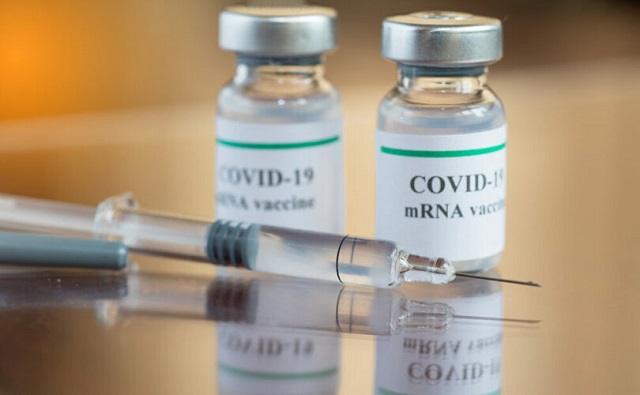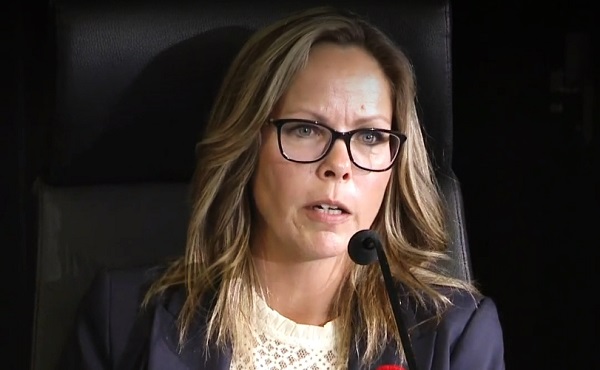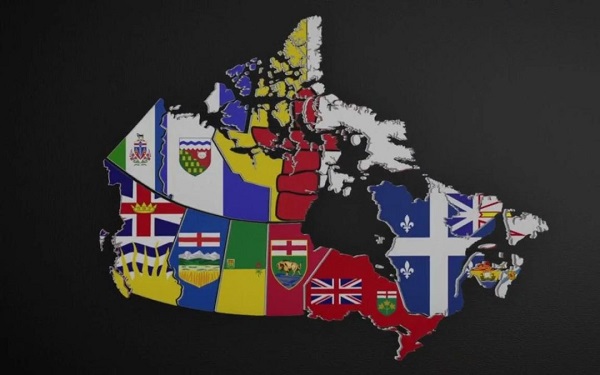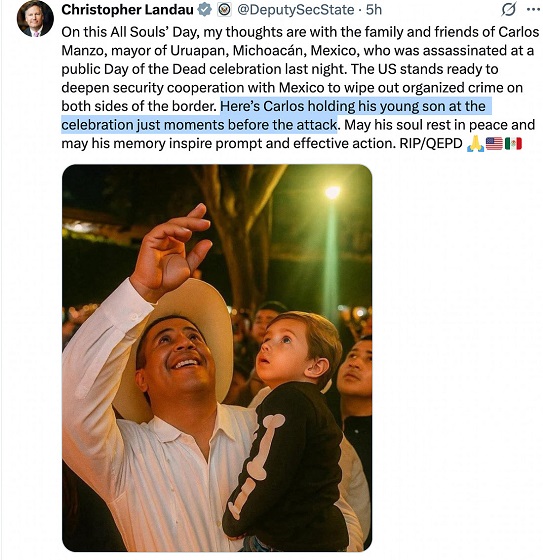COVID-19
New Study Finds COVID-19 ‘Vaccination’ Doubles Risk of Post-COVID Death

A few days ago, the study titled Evaluation of post-COVID mortality risk in cases classified as severe acute respiratory syndrome in Brazil: a longitudinal study for medium and long term was published in Frontiers in Medicine:
Background: There are few studies in the literature evaluating post-COVID mortality in Brazil, along medium and long term, especially in those who presented severe clinical disease.
Objective: This study aims to investigate the factors associated with post-COVID mortality of severe acute respiratory syndrome (SARS) cases from 2020 to 2023 in Brazil, along medium and long term.
Methods: Retrospective cohort study using notification data of SARS classified as COVID-19 from the Brazilian National Information System, “Sistema de Vigilância Epidemiológica (SIVEP),” during the period 2020 to 2023. Data included demographics, comorbidities, vaccination status, number of COVID-19 vaccine doses, city of residence, and survival outcomes. Classic Cox, Cox mixed effects, and Cox fragility models were used to assess medium and long-term risks of dying post-COVID.
Results: In the medium and long-term periods studied, 5,157 deaths were recorded out of 15,147 reported SARS/COVID-19 cases. Of these deaths, 91.5% (N = 4,720) occurred within the first year, while 8,5% (N = 437) after the first year. People without formal education, the older adult, had higher percentages of deaths in both periods. In the medium-term post-COVID period, the risk of death was reduced by 8% for those who had been vaccinated while in the long-term post-COVID period, the risk of death almost doubled for those who had been vaccinated. While in the medium term, there was a reduction in mortality risk for those who took two or three doses, in the long term the risk of death was greater for those who took one or two doses.
Conclusion: The protective effect of COVID-19 immunization was observed up to one year after the first symptoms. After one year, the effect was reversed, showing an increased risk of death for those vaccinated. These results highlight the need for further research to elucidate the factors that contribute to these findings.
As illustrated in the Kaplan Meier survival curves, over the long-term, those that refused COVID-19 injections were less likely to die compared to vaccinated individuals. While vaccination initially reduced post-COVID mortality risk in the medium term, this protective effect completely reversed in the long term, ultimately doubling the risk of death.
The authors said that the ‘protective effect’ in the medium term could have been due to the following factors:
(1) Vaccination may be associated with healthier behaviors or greater health awareness. For example, vaccinated individuals may be more likely to follow other public health recommendations, such as staying up-to-date with preventive health measures, having regular medical check-ups, or adopting healthier lifestyles. This could lead to a reduction in the risk of death from other causes in the medium term.
(2) Access to healthcare – since people with comorbidities were prioritized for COVID-19 immunization, these populations may also have benefited from increased medical monitoring and access to healthcare, which may have contributed to a reduction in the risk of death from other causes.
The authors then gave possible reasons behind the complete reversal to doubling the risk of death in the long-term:
(1) Adverse effects of the vaccines – while COVID-19 vaccines have proven to be safe for the vast majority of people, there are concerns about potential long term adverse effects (although rare), such as myocarditis, thrombosis, or other rare conditions associated with vaccination. These effects may be more pronounced in some groups, particularly in more vulnerable individuals, which could contribute to an increased risk of death from other causes over time;
(2) The COVID-19 vaccine may have an indirect effect on the immune system – for people with pre-existing conditions or those with weakened immune systems (such as patients with autoimmune diseases or those on immunosuppressive treatments), the immune response to the virus may have unexpected or complex effects that increase vulnerability to other infections or lead to complications of pre-existing conditions.
This study corroborates Alessandria et al, who found that COVID-19 ‘vaccination’ reduced life expectancy by 37% and increased all-cause death risks during the 2-year follow-up period:
These data help explain why at least 17 million people may have died from COVID-19 ‘vaccination’ as demonstrated by Rancourt et al. Life-reducing injections should NOT be recommended for anyone and must be immediately removed from global markets to safeguard the public from further injury and death.
In the United States, COVID-19 genetic injections are estimated to have caused more deaths than American casualties in WWI and WWII combined. The death toll even rivals the scale of the Civil War. This is a profound national tragedy, and accountability is urgently warranted.
Nicolas Hulscher, MPH
Epidemiologist and Foundation Administrator, McCullough Foundation
COVID-19
Canadian veteran challenges conviction for guarding War Memorial during Freedom Convoy

From LifeSiteNews
When the convoy first came to Ottawa, allegations were floated that the memorial had been desecrated. After learning of this, Evely quickly organized a group of veterans to stand guard around the clock to protect the area.
A Canadian veteran appealed to the Ontario courts after he was convicted for organizing a guard around the National War Memorial during the Freedom Convoy.
In an October press release, the Justice Centre for Constitutional Freedoms (JCCF) announced that an appeal has been filed in the Ontario Court of Appeals on behalf of Master Warrant Officer (Ret’d) Jeffrey Evely over his conviction for mischief and obstructing police while on his way to guard the Ottawa War Memorial during the 2022 Freedom Convoy.
“By locking down large sections of downtown Ottawa, the police were effectively preventing all civilians from accessing public areas and greatly exceeded their powers under the common law,” constitutional lawyer Chris Fleury explained.
“This case raises issues that have implications for protests across the province and the country. We are hopeful that the Ontario Court of Appeal will agree and grant leave to appeal,” he added.
The appeal argues that police overstepped their authority in their response to the 2022 protest of COVID mandates. Police actions at the time included locking down the Ottawa core, establishing checkpoints, and arresting protesters.
In September 2024, Everly was convicted of mischief and obstruction after his involvement in the 2022 Freedom Convoy, which protested COVID mandates by gathering Canadians in front of Parliament in Ottawa.
As LifeSiteNews previously reported, when the convoy first came to Ottawa, allegations were floated that the memorial had been desecrated. After learning of this, Evely quickly organized a group of veterans to stand guard around the clock to protect the area.
However, under former Prime Minister Justin Trudeau’s use of the Emergencies Act, many parts of downtown Ottawa were blocked to the public, and a vigilant police force roamed the streets.
It was during this time that Evely was arrested for entering a closed off section of downtown Ottawa during the early hours of February 19, 2022. He had been on his way to take the 4:25 a.m. shift protecting the Ottawa War Memorial.
As Evely walked to the memorial, he was allegedly told to stop by police. According to the police, Evely “ran for a short distance before being confronted by two additional police officers.”
He was forcibly pushed to the ground, landing face first. The veteran was then arrested and charged with mischief and obstructing police.
At the time, the use of the EA was justified by claims that the protest was “violent,” a claim that has still gone unsubstantiated.
In fact, videos of the protest against COVID regulations and shot mandates show Canadians from across the country gathering outside Parliament engaged in dancing, street hockey, and other family-friendly activities.
Indeed, the only acts of violence caught on video were carried out against the protesters after the Trudeau government directed police to end the protest. One such video showed an elderly women being trampled by a police horse.
While the officers’ actions were originally sanctioned under the EA, Federal Court Justice Richard Mosley ruled that Trudeau was “not justified” in invoking the EA, forcing Crown prosecutors to adopt a different strategy.
Now, Crown prosecutors allege that the common law granted police the authority to stop and detain Evely, regardless of the EA.
However, Evely and his lawyers have challenged this argument under section 9 of the Canadian Charter of Rights and Freedoms, insisting that his “arrest and detention were arbitrary.”
Earlier this month, Freedom Convoy organizers Tamara Lich and Chris Barber were sentenced to 18-month house arrest after a harrowing 25-month trial process. Many have condemned the sentence, warning it amounts to “political persecution” of those who stand up to the Liberal government.
COVID-19
Freedom Convoy leader Tamara Lich says ‘I am not to leave the house’ while serving sentence

From LifeSiteNews
‘I was hoping to be able to drop off and pick up my grandsons from school, but apparently that request will have to go to a judge’
Freedom Convoy leader Tamara Lich detailed her restrictive house arrest conditions, revealing she is “not” able to leave her house or even pick up her grandkids from school without permission from the state.
Lich wrote in a X post on Wednesday that this past Tuesday was her first meeting with her probation officer, whom she described as “fair and efficient,” adding that she was handed the conditions set out by the judge.
“I was hoping to be able to drop off and pick up my grandsons from school, but apparently that request will have to go to a judge under a variation application, so we’ll just leave everything as is for now,” she wrote.
Lich noted that she has another interview with her probation officer next week to “assess the level of risk I pose to re-offend.”
“It sounds like it’ll basically be a questionnaire to assess my mental state and any dangers I may pose to society,” she said.
While it is common for those on house arrest to have to ask for permission to leave their house, sometimes arrangements can be made otherwise.
On October 7, Ontario Court Justice Heather Perkins-McVey sentenced Lich and Chris Barber to 18 months’ house arrest after being convicted earlier in the year convicted of “mischief.”
Lich was given 18 months less time already spent in custody, amounting to 15 1/2 months.
As reported by LifeSiteNews, the Canadian government was hoping to put Lich in jail for no less than seven years and Barber for eight years for their roles in the 2022 protests against COVID mandates.
Interestingly, Perkins-McVey said about Lich and Barber during the sentencing, “They came with the noblest of intent and did not advocate for violence.”
Lich said that her probation officer “informed me of the consequences should I breach these conditions, and I am not to leave the house, even for the approved ‘necessities of life’ without contacting her to let her know where I’ll be and for how long,” she wrote.
“She will then provide a letter stating I have been granted permission to be out in society. I’m to have my papers on my person at all times and ready to produce should I be pulled over or seen by law enforcement out and about.”
Lich said that the probation officer did print a letter “before I left, so I could stop at the optometrist and dentist offices on my way home.”
She said that her official release date is January 21, 2027, which she said amounts to “1,799 days after my initial arrest.”
As reported by LifeSiteNews, Lich, reflecting on her recent house arrest verdict, said she has no “remorse” and will not “apologize” for leading a movement that demanded an end to all COVID mandates.
LifeSiteNews reported that Conservative Party leader Pierre Poilievre offered his thoughts on the sentencing, wishing them a “peaceful” life while stopping short of blasting the sentence as his fellow MPs did.
In early 2022, the Freedom Convoy saw thousands of Canadians from coast to coast come to Ottawa to demand an end to COVID mandates in all forms. Despite the peaceful nature of the protest, Trudeau’s government enacted the never-before-used Emergencies Act (EA) on February 14, 2022.
-

 Agriculture2 days ago
Agriculture2 days agoCloned foods are coming to a grocer near you
-

 International2 days ago
International2 days agoSagrada Familia Basilica in Barcelona is now tallest church in the world
-

 Alberta2 days ago
Alberta2 days agoGondek’s exit as mayor marks a turning point for Calgary
-

 Business20 hours ago
Business20 hours agoYou Won’t Believe What Canada’s Embassy in Brazil Has Been Up To
-

 Censorship Industrial Complex19 hours ago
Censorship Industrial Complex19 hours agoSenate Grills Meta and Google Over Biden Administration’s Role in COVID-Era Content Censorship
-

 Fraser Institute2 days ago
Fraser Institute2 days agoOttawa continues to infringe in areas of provincial jurisdiction
-

 Business18 hours ago
Business18 hours agoMystery cloaks Doug Ford’s funding of media through Ontario advertising subsidy
-

 Crime6 hours ago
Crime6 hours agoPublic Execution of Anti-Cartel Mayor in Michoacán Prompts U.S. Offer to Intervene Against Cartels














